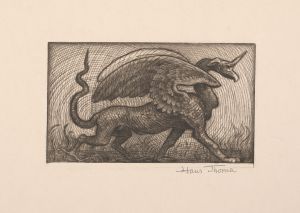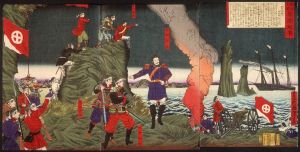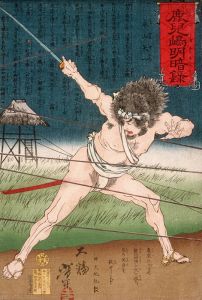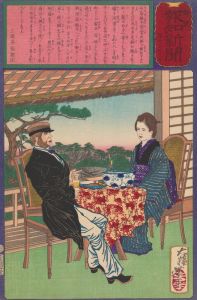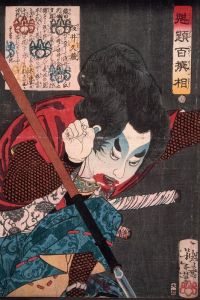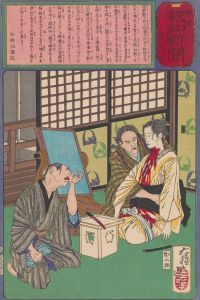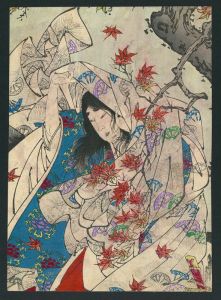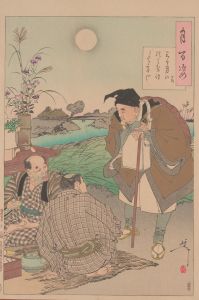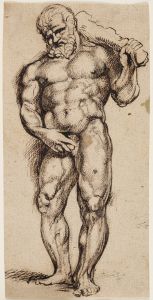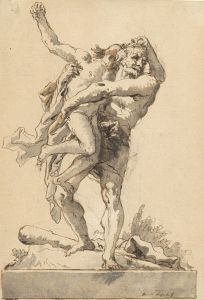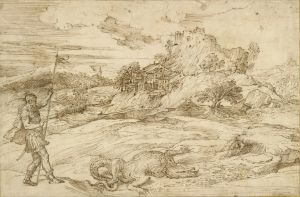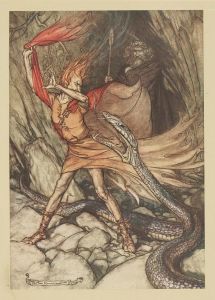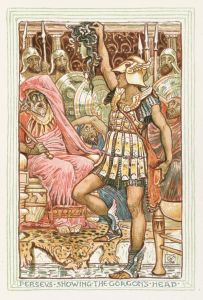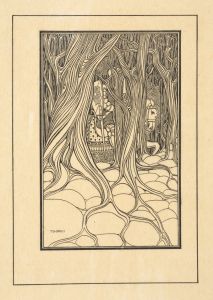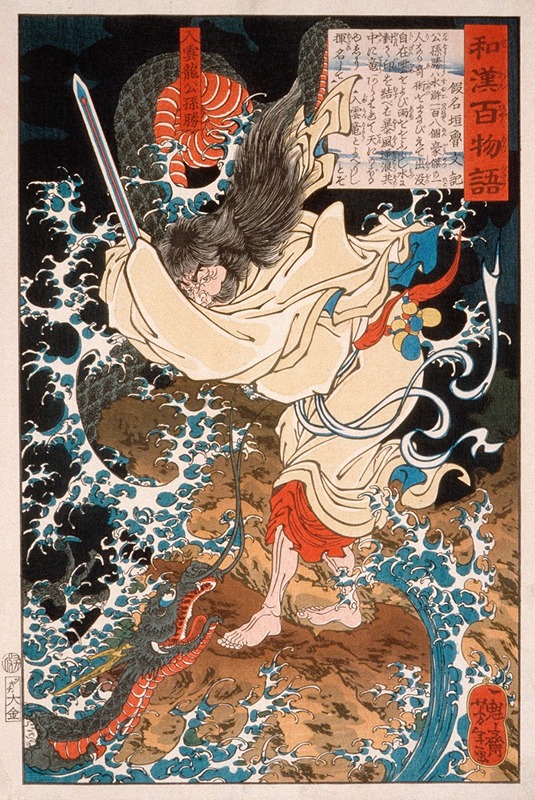
Gongsun Sheng, the Dragon in the Clouds
A hand-painted replica of Tsukioka Yoshitoshi’s masterpiece Gongsun Sheng, the Dragon in the Clouds, meticulously crafted by professional artists to capture the true essence of the original. Each piece is created with museum-quality canvas and rare mineral pigments, carefully painted by experienced artists with delicate brushstrokes and rich, layered colors to perfectly recreate the texture of the original artwork. Unlike machine-printed reproductions, this hand-painted version brings the painting to life, infused with the artist’s emotions and skill in every stroke. Whether for personal collection or home decoration, it instantly elevates the artistic atmosphere of any space.
Tsukioka Yoshitoshi was a renowned Japanese artist of the late Edo and early Meiji periods, celebrated for his woodblock prints and his role in the development of the ukiyo-e art form. One of his notable works is "Gongsun Sheng, the Dragon in the Clouds," which is part of his series "One Hundred Aspects of the Moon" (Tsuki hyakushi). This series, created between 1885 and 1892, is considered one of Yoshitoshi's masterpieces and reflects his deep interest in history, folklore, and the supernatural.
"Gongsun Sheng, the Dragon in the Clouds" depicts a character from the classic Chinese novel "Water Margin" (also known as "Outlaws of the Marsh"), which is one of the Four Great Classical Novels of Chinese literature. Gongsun Sheng is a Taoist priest and one of the 108 outlaws who gather at Liangshan Marsh to form a band of rebels. He is known for his magical abilities, particularly his power to summon wind and rain, and his nickname "Dragon in the Clouds" reflects these supernatural skills.
Yoshitoshi's portrayal of Gongsun Sheng captures the mystical and dramatic essence of the character. The print features Gongsun Sheng in a dynamic pose, surrounded by swirling clouds that emphasize his connection to the elements and his otherworldly powers. The use of bold lines and vibrant colors is characteristic of Yoshitoshi's style, which often blends traditional Japanese techniques with innovative approaches to composition and subject matter.
The "One Hundred Aspects of the Moon" series is notable for its exploration of themes related to the moon, which serves as a unifying motif throughout the collection. Each print in the series is inspired by a story, legend, or historical event associated with the moon, and Yoshitoshi uses this celestial body to evoke a sense of mystery and timelessness. In the case of "Gongsun Sheng, the Dragon in the Clouds," the moon may symbolize the mystical and elusive nature of the character's powers.
Yoshitoshi's work is significant not only for its artistic merit but also for its cultural and historical context. During the Meiji period, Japan was undergoing rapid modernization and Westernization, and traditional art forms like ukiyo-e were in decline. Yoshitoshi's dedication to preserving and revitalizing these techniques made him a pivotal figure in the history of Japanese art. His prints often reflect a tension between the old and the new, capturing the complexities of a society in transition.
"Gongsun Sheng, the Dragon in the Clouds" exemplifies Yoshitoshi's ability to blend narrative depth with visual innovation. The print is a testament to his skill in storytelling through art, as well as his fascination with the supernatural and the heroic. Today, Yoshitoshi's works are highly regarded by collectors and scholars, and they continue to be celebrated for their beauty, craftsmanship, and cultural significance.





